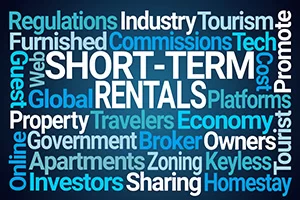
Business Advisory Services
Everything you need to help you launch your new business entity from business entity selection to multiple-entity business structures.
Hey - Our site just had a makeover and we are sorting through the hiccups!
Hey - Our site just had a makeover and we are sorting through the hiccups!

Everything you need to help you launch your new business entity from business entity selection to multiple-entity business structures.

Designed for rental property owners where WCG CPAs & Advisors supports you as your real estate CPA.

Everything you need from tax return preparation for your small business to your rental to your corporation is here.

WCG’s primary objective is to help you to feel comfortable about engaging with us
Table Of Contents

As you likely know, W-2 income is rigid, heavily taxed, and painfully inflexible. It’s the income the IRS loves most, and Congress isn’t shy about phasing out your tax deductions, credits (dependent care and child tax credits), and benefits the second your adjusted gross income (AGI) climbs past the comfort zone.
There isn’t a secret tax deduction club that only a few people know about. If there were, it would be like Fight Club, right? But trust us, no one is intentionally keeping tax deductions and high income tax strategies a secret.
Most people are interested in saving cash when they say they want to reduce or avoid taxes, but saving cash and reducing taxes are not necessarily the same.
Back to tax FOMO (fear of missing out in case you didn’t know)—Two households, making the exact same income, might have wildly different tax liabilities based on the myriad of variables such as children, mortgage interest, charitable donations, available tax credits, and, yes, the proficiency of the tax professionals involved like WCG CPAs & Advisors.
As household incomes travel through the ranges, a lot of things happen. The first $100,000 in income for most households is well-sheltered with itemized deductions and low tax brackets. The next $100,000 in income sees certain tax credits go away, higher tax brackets and fewer available tax deductions such as IRAs and other things (what we call income phase-outs). In other words, if you go from $100,000 to $200,000 in household income, you will pay way more than double in taxes (you could easily see 2.5 to 3.0 times more). Yuck! The next $100,000 and beyond is completely naked, in a bad way, and is generally purely taxable (unless some tax reduction tactics are deployed). Super yuck!
Pair that with a high-net-worth (HNW) household—where investments, stock compensation, and real estate often layer on top—and the tax picture gets even tighter and W-2 earners at high income levels have fewer levers and more pain points.
This article is about those strategies.
These aren’t surface-level recommendations. These require planning, cash, and occasionally risk. They require documentation, intention, and sometimes a willingness to rethink how you structure your financial life. But when used properly, these strategies can dramatically reduce taxable income and reshape your long-term tax landscape.
Let’s dive in.
Let’s clear the air:
But those strategies are the financial equivalent of flossing your teeth. They’re good hygiene. Useful. Basic. Everyone with high W-2 income has heard these 10,000 times.
This article is not the “been there, done that” stuff. Rather, this article is about the tax strategies that materially reduce taxable income for high W-2 earners and high net worth (HNW) households. But, and here’s the Isaac Newton opposite reaction, the following tax planning concepts are the things that take cash, effort (material participation) and risk (financial risk first, audit risk distant second).
Let’s start with the strategy that has changed more high-income tax returns in the last five years than anything else.
This is the #1 way for high-income W-2 earners to reduce taxable income — from both a tax reduction strategy perspective, and, more importantly, a feel-good perspective since most taxpayers understand real estate or at least are more comfortable with it.
The short-term rental (STR) rules are one of the few areas where Congress unintentionally left a door wide open. If you operate a short-term rental where the average stay is:
and you materially participate (500 hours, 100 hours and no one did more than you, or substantially all hours) your rental property losses are now nonpassive and can offset high W-2 income. And No, you don’t need Real Estate Professional Status (REPS) to make it all work.
But that isn’t the whole story. The bang for the buck comes from pairing a short-term rental with cost segregation and bonus depreciation. Here’s the play:

The catch:
But for high-income and HNW earners looking to reduce taxable income fast, the short-term rental loophole works well. It doesn’t have the wow factor like a structured equipment lease or a yacht purchase with leaseback, but it is a good combination tax reduction and comfort.
Most high-income W-2 earners can’t qualify for REPS themselves — they simply don’t have the time to spare. But your spouse might.
If your spouse meets the REPS tests (750 hours and more than half their personal working time is spent on real estate activities) and materially participates in your rental activities, then all of your rental losses become nonpassive.
That means:
All fully tax deductible against your high W-2 income. Many high-income and HNW households use REPS as their long-term tax plan after the initial STR loophole move in the first year. Let’s not forget converting your short-term rental into a second home.
Add in real estate syndications. This is big — if the spouse is REPS and materially participates, losses from real estate syndications can become nonpassive as well (typically with an IRC Section 469-9(g) election).
Real estate syndicates often generate:
A REPS household can turn those passive paper losses into nonpassive deductions that hit W-2 income. This is one of the most underappreciated high-income tax strategies in the industry.
Here’s the rub — exiting these positions can be tricky. In other words, redeeming your interest back to the syndicate or selling your interest might have long time horizons or silly hurdles. Remember, the real estate syndicate investment must be a good investment first, and a tax play second.
Once your income is high enough (W-2 + investments + net worth), doors open to specialized investment structures designed for tax benefit. These are not for everyone — but they are absolutely strategies high-income and HNW W-2 earners should be aware of.
Working-interest oil and gas deals are often sold as “one of the last ways to offset W-2 income,” and unlike most marketing lines, this one has teeth: Intangible Drilling Costs (IDCs) can generate huge upfront deductions, and the working-interest carve-out in IRC Section 469(c)(3) treats those losses as nonpassive without requiring material participation. But that carve-out only applies if you genuinely hold an unlimited-liability working interest — meaning you’re exposed to operating costs, cash calls, environmental liabilities, and litigation risk. Let’s not forget the well might dry up.
Try to tuck the interest into an LLC or limited partnership to cap that liability, and the IRS simply removes the carve-out, treating the losses as passive and, in some cases, subject to self-employment tax (see Methvin v. Commissioner for a fun read). The trade-off is straightforward: big tax deductions against your high W-2 income in exchange for very real risk. Used correctly, a working interest can offset active income; used casually, it becomes either passive or dangerous.
Structured equipment leasing is often pitched as the classic “you get the depreciation, we do the work” strategy, usually wrapped in a glossy LLC that owns medical devices, industrial machinery, or other big-ticket equipment. You write a check, the sponsor leases everything out, and bonus depreciation or Section 179 expensing generates attractive paper losses.
The catch? Unless you materially participate — meaning you help choose lessees, negotiate terms, monitor contracts, and make real decisions — those losses are passive, not deductible. Courts have repeatedly shut down these “too passive to be real” arrangements, most notably in AWG Leasing Trust v. United States. Also if the deal shows predictable losses, guaranteed buyouts, or no true skin in the game, the IRS can treat the entire structure as an abusive tax shelter.
Similar to the structured equipment leasing, buying a yacht or airplane and leasing it back to a charter operator gets marketed as the perfect blend of “fun toy + big deduction,” especially when bonus depreciation or Section 179 can materially reduce taxable income. But unless you materially participate — meaning real, hands-on management of scheduling, contracts, maintenance, and decision-making — those losses remain passive and stuck. Even with hours logged, the IRS can still argue you aren’t running a bona fide trade or business if your involvement isn’t regular, continuous, and profit-motivated.
And like any other investment, syndicate or otherwise, you need to be able to exit. Otherwise, your high W-2 income next year is going to be used to get out of wealth jail and not leverage your next tax reduction strategy. As we’ve said before, no risk it, no biscuit — these strategies require money, commitment, and the stomach to handle both.
But all these belong on the list because they are legitimate levers that high-income W-2 earners can use when appropriate.
High-income and HNW earners often have large taxable brokerage accounts filled with low-basis stock. Selling it triggers large capital gains—and the tax bill feels like a punishment for being good at investing.
Enter: asset-backed lending. Here’s the move: Instead of selling stock, you borrow against your portfolio at a low interest rate.
Use the loan for:
You get liquidity without paying tax because borrowing is not a taxable event. When used correctly:
But for high-income and HNW earners? This is one of the most elegant ways to “unlock” wealth building without letting the IRS take a slice or a couple of slices in some cases.
People laugh at this strategy until they run the numbers. Moving from California or New York to a no-income-tax state:
Important distinction: A “paper move” is not a real move. True residency requires cutting ties, establishing new ties, and demonstrating economic substance. How do they test this? “Hey, please show me how you spend money and live your life in your fancy no income state by providing receipts for gas, groceries, bar bills, Door Dash, etc.” And then Cousin Vinnie comes to mind, “You were serious about that?!”
This is not “tax-loss harvesting.” Yawn. Rather, this is strategic control of when income and gains hit your tax return. High-income W-2 earners often face:
And all of them interact with:
The lens: You’re not optimizing one asset. You’re optimizing your entire income stack.
Sometimes the best strategy is:
This is where high-income tax planning becomes art, not science. You want to align high W-2 income with a deployment of an impactful tax reduction strategy, especially if your household income is unusually high this year as compared to next year.
These strategies live in the shadows—not because they’re bad, but because they are highly technical and require experienced counsel. Oh, and they invite a ton of risk into your world.
When structured correctly and valued properly, conservation easements can create extremely large charitable deductions. But, they are under heavy scrutiny from the IRS, and abusive promoter-based easements have been shutdown. Legitimate easements still exist, typically for large landowners or conservation-focused families, but they’re rare and require impeccable documentation.
HNW families with FLPs or LLCs sometimes use valuation discounts to convert at lower values:
It’s complex, requires a valuation expert, and isn’t for casual weekend planners. But the tax leverage can be significant.
These “shadow strategies” are rare, advanced, and not for everyone — but they’re real, and in some HNW cases, they’re the right tool. In other words, you need to throw a lot of money at it, such as $500,000 or more, in cash, to make the risk and cost manageable as compared to the tax benefit.
People don’t talk about these at cocktail parties, but the families who use them strategically tend to be the ones thinking in 10–20 year arcs.
Sorry, not trying to tell you about your little brother who Mom seems to favor the most, but W-2 earners often feel frustrated when comparing themselves to small business owners — because, frankly, business owners have far more flexibility.
Business owners can:
W-2 earners cannot do these things. So the strategies in this article matter even more — these are the few levers you do have, and they’re powerful when used intentionally.
Just because a strategy exists doesn’t mean it’s a match. You need:

The right strategy moves you forward. The wrong strategy becomes an expensive distraction.
At WCG CPAs & Advisors, we see these all the time:
The best tax strategies are simple, repeatable, and integrated with your life.

At WCG CPAs & Advisors, we don’t shy away from complex strategies, but we don’t sugarcoat them either. Many of these aggressive tax strategies hinge on fine legal distinctions: how much you participate, who takes the risk, and whether there’s a reasonable expectation of profit
High-income and HNW W-2 earners don’t have seemingly endless tax levers like business owners. But the few levers you do have are incredibly powerful — especially when planned early and applied correctly.
Real tax reduction happens now and is a six sigma sort of thing: have a clear vision of where you want to go, align tax strategies to your objectives, and pay continuous attention to the details every year. Lather. Rinse. Repeat. A lot.

Ready for some help? You can schedule a discovery meeting with one of WCG CPAs & Advisors senior tax strategists. From there we can craft a tax advisory project to include learning your objectives, aligning tax strategies and developing scenario-based mock-ups. No sales pitches, no sugar-coating, no BS. Just straight analysis, honest advice, and clear action.
Yes, if you materially participate and the rental meets the short-term rules. Do it right and you can pair it with cost segregation for a tax deduction that actually matters.
Nope. STRs have their own special rules, which is why high-income earners love them. REPS is great, but STRs are the quick win especially if both spouses work.
Absolutely. In fact, that’s how most REPS households work. One spouse earns the W-2, the other racks up the hours and unlocks the tax reductions coming from rentals and real estate syndicates.
Only if your household qualifies under REPS since you need to materially participate; otherwise, those losses stay passive and won’t touch your W-2. Always make sure the investment pencils out before chasing the tax benefit. An IRC Section 469-9(g) election might be in order as well.
It can be, but only with real material participation and real profit motive (business effort). If it smells like a toy, or a hobby, or basically a sham operation, the IRS will treat it like one.
The tax benefits are real, but so is the unlimited liability, environmental exposure, and risk. If that sentence made you itch, this strategy probably isn’t for you.
It can be, as long as you respect margin calls and don’t treat leverage like free money. Used responsibly, it’s one of the cleanest tax-free liquidity tools around.
Yes, but only if the move is real. Buying a condo in Texas while living your life in California won’t fool anyone—especially not the franchise tax board or your state’s revenue department.
Only if you’re in deep HNW territory, have excellent advisors, and love documentation. They’re powerful but not casual-weekend strategies.
Because the tax code favors people who take business risk, hang a shingle, hire others, and run operations. W-2 earners can still win, but the strategies take planning, intention, and usually a bit of skin in the game.

Want to talk to us about tax return preparation, tax planning and strategy, and all the other things that go with it? We are eager to assist! The button below takes you to our Getting Started webpage, but if you want to talk first, please give us a call at 719-387-9800 or schedule an discovery meeting.
Jason Watson, CPA is a Partner and the CEO of WCG CPAs & Advisors, a boutique consultation and tax preparation CPA firm serving clients nationwide with 7 partners and over 90 tax and accounting professionals specializing in small business owners and real estate investors located in Colorado Springs.
He is the author of Taxpayer’s Comprehensive Guide on LLC’s and S Corps and I Just Got a Rental, What Do I Do? which are available online and from mostly average retailers.
Table Of Contents

Tax planning season is here! Let's schedule a time to review tax reduction strategies and generate a mock tax return.

Tired of maintaining your own books? Seems like a chore to offload?
Did you have questions about how to reduce taxable income? Do you think a high W-2 traps you in few options? Need someone to bounce some ideas off of? Let's chat!
The tax advisors, business consultants and rental property experts at WCG CPAs & Advisors are not salespeople; we are not putting lipstick on a pig expecting you to love it. Our job remains being professionally detached, giving you information and letting you decide within our ethical guidelines and your risk profiles.
We see far too many crazy schemes and half-baked ideas from attorneys and wealth managers. In some cases, they are good ideas. In most cases, all the entities, layering and mixed ownership is only the illusion of precision. As Chris Rock says, just because you can drive your car with your feet doesn’t make it a good idea. In other words, let’s not automatically convert “you can” into “you must.”
Let’s chat so you can be smart about it.
We typically schedule a 20-minute complimentary quick chat with one of our Partners or our amazing Senior Tax Professionals to determine if we are a good fit for each other, and how an engagement with our team looks. Tax returns only? Business advisory? Tax strategy and planning? Rental property support?

Everything you need to help you launch your new business entity from business entity selection to multiple-entity business structures.

Designed for rental property owners where WCG CPAs & Advisors supports you as your real estate CPA.

Everything you need from tax return preparation for your small business to your rental to your corporation is here.

WCG’s primary objective is to help you to feel comfortable about engaging with us

